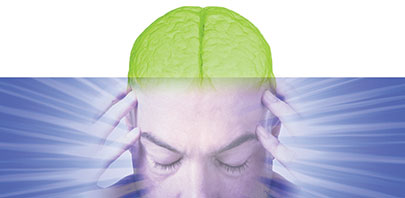 In your body, millions of neurons are busy receiving chemical messages and generating electrical signals. It’s happening right this very moment—and every moment. When you lift a bowling ball, neurons cause arm muscles to contract. When you drop that bowling ball on your toe, neurons send electrical impulses up the spine to your brain, creating the sensation of pain. When you stifle a muttered curse, the left and right hemispheres of your brain become a hive of neuronal activity. Later, when you think back to the whole unfortunate incident, neurons are activated in your brain.
In your body, millions of neurons are busy receiving chemical messages and generating electrical signals. It’s happening right this very moment—and every moment. When you lift a bowling ball, neurons cause arm muscles to contract. When you drop that bowling ball on your toe, neurons send electrical impulses up the spine to your brain, creating the sensation of pain. When you stifle a muttered curse, the left and right hemispheres of your brain become a hive of neuronal activity. Later, when you think back to the whole unfortunate incident, neurons are activated in your brain.
To understand the millions of nerve cells, McGill researchers are exploring new pathways of discovery where disciplines intersect: psychology and neurology, linguistics and chemistry, kinesiology and neurosurgery. By furthering knowledge of the function and structure of the human brain and nervous system, they’re moving closer to curing dementia, to reversing paralysis, to soothing psychological trauma. And even to easing the pain of crushed toes. Their particular brand of neuroscience is radically improving the quality of life for countless people around the globe.
In the 1950s, McGill neurosurgeon Wilder Penfield made history by being the first person to map the sensory and motor cortices. His work is still actively used, but it’s just the beginning of McGill’s exploration of the neurological frontier.
In this 26-page special report, read about the exciting ways McGill researchers are using their brains to better understand the mysteries of yours.
